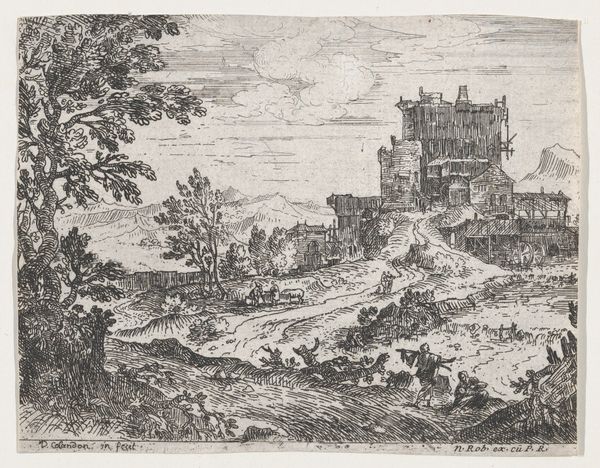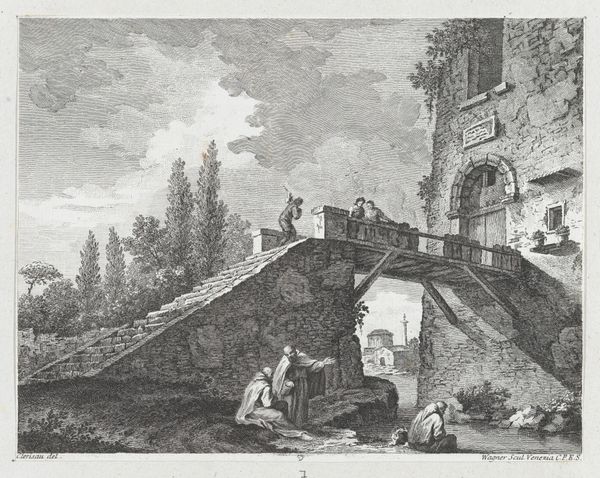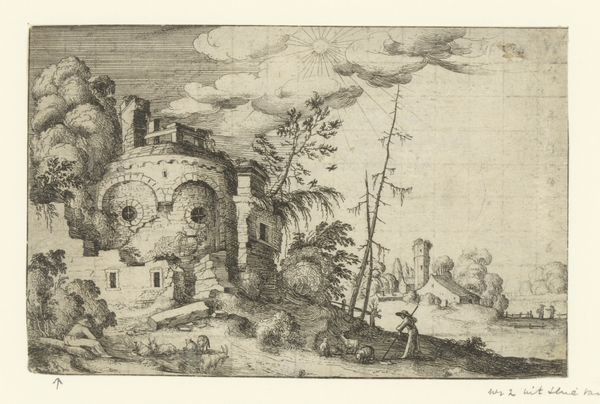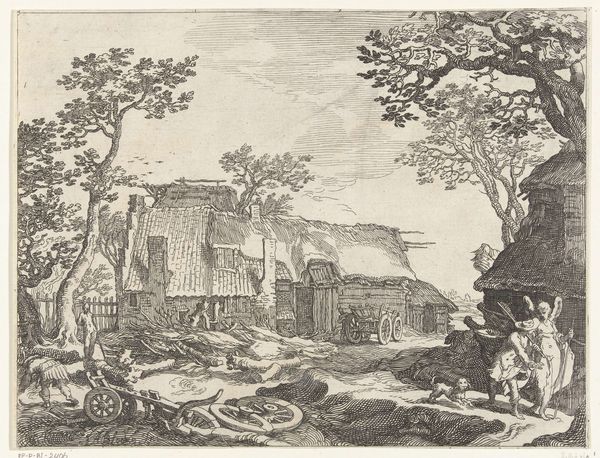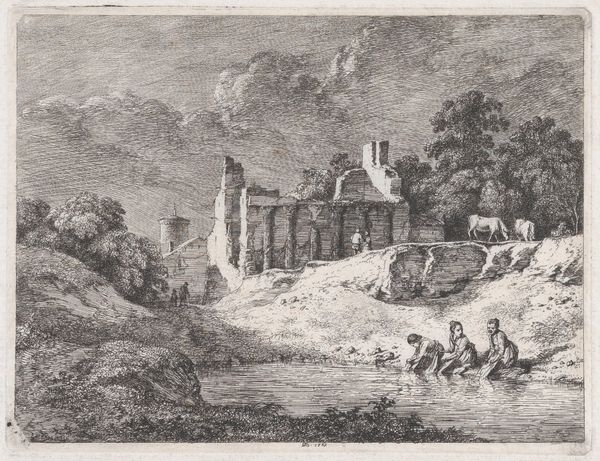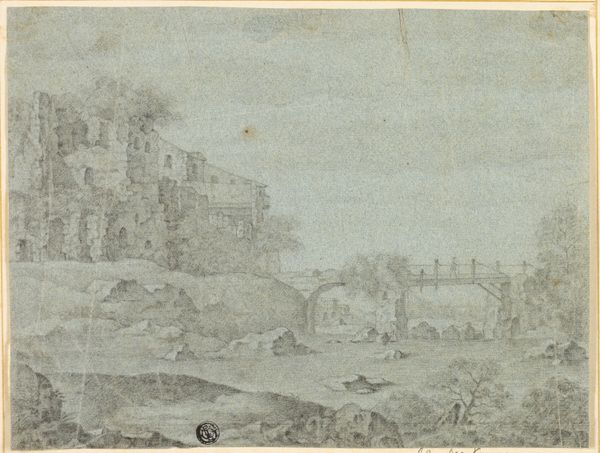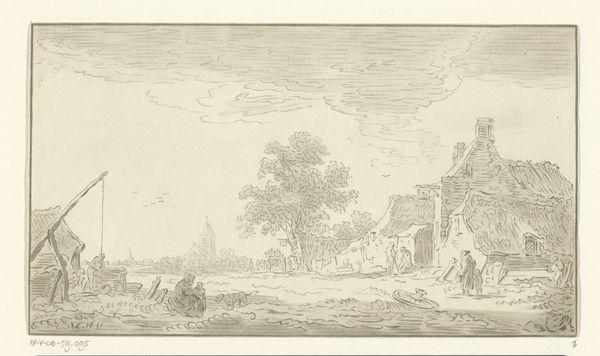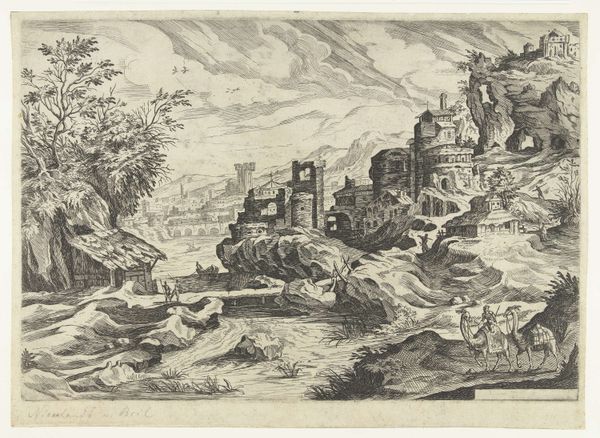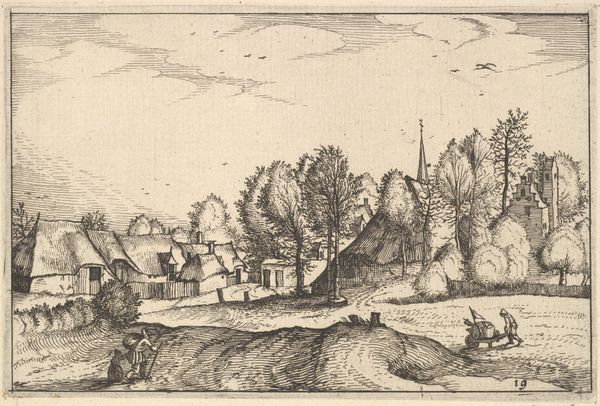
drawing, print, etching
#
drawing
#
medieval
# print
#
etching
#
landscape
#
etching
Dimensions: Sheet (Trimmed): 2 3/4 × 5 7/8 in. (7 × 14.9 cm)
Copyright: Public Domain
Editor: This is Emile-Florentin Daumont’s etching, "Landscape with round tower," likely created sometime between 1854 and 1904. It's incredibly detailed despite being a relatively small print. What do you make of its composition? Curator: Its strength lies in the delicate yet assured linework. Consider how the artist has used the varying densities of hatching to suggest volume and light. Observe how the round tower acts as a visual anchor, placed strategically off-center, leading the eye into the depths of the imagined landscape. Note the relationship between the different parts that make up this intricate structural organization; is it unified, balanced, coherent? Editor: So you're focusing on how the lines create the structure? Curator: Precisely. It is the *relationship* between these formal elements that communicates the artist’s intentions. How the light falls, how the eye moves – these are not accidental, but rather consciously constructed through the careful manipulation of form and space. Consider, also, the interplay between the rough texture of the rocks and the smoother surfaces of the buildings. How does that textural contrast affect your reading of the image? Editor: I see what you mean! The contrast adds depth and a sense of realism to this otherwise fantastical scene. The ruggedness of the nature against man's creation. Curator: An astute observation! Moreover, we can infer artistic influence and authorial intention when assessing choices made and apparent techniques. What would you say? Editor: I think by focusing on Daumont’s artistic choices – the lines, the composition, the contrasting textures – you can see the artwork in a new light and appreciate the artistry on its own, without any context. Thank you. Curator: Indeed. Through acute observation and close analysis, one can discover deeper meaning, purpose, and understanding inherent within its structure, revealing authorial choices within artistic processes.
Comments
No comments
Be the first to comment and join the conversation on the ultimate creative platform.
